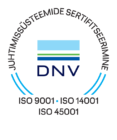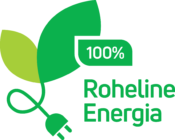Nordecon has completed work on the closure of the 28-hectare Rääma landfill in Pärnu at a total cost of 3.45 million euros. In addition to isolating the waste disposed of at the site and covering the landfill area, a gas collection system was constructed along with a heating and power station.
"It’s great to be able to present clients with sites where everything’s been done just the way it should be and where everyone’s happy with the results," said Erkki Suurorg, a member of the management board of Nordecon AS. "It’s great, too, that we’ve been able to do so much for the people of Pärnu over the last couple of years – renovating the Papiniidu bridge on the Pärnu bypass and now closing the landfill, which is a key environmental site for the city. The aim we had was clear – managing air, soil and water pollution on the site – and we’ve given the whole thing a new lease on life."
Suurorg says that one of the tasks the company faced in closing the landfill was to install a waterproof barrier around the body of waste deposited at the site so as to avoid polluted surface water from getting into the water table and the Pärnu River. "The run-off from the landfill is being collected and directed through pipelines back into the landfill itself or into the city’s sewers for treatment at the Pärnu Vesi plant," he explained.
The body of waste also had to be covered so that rain water would not generate more pollution. To this end an impermeable bentonite mat was used, above which a drainage layer and an additional layer of soil were laid. "And what we’ve got as a result is a fantastic landscaped area which in time will be able to be used for all sorts of things, not just recreational purposes," Suurorg said.
Since the methane being emitted by the landfill is harmful to the environment, Nordecon constructed a gas collection system and heating and power station on the site. All of the electricity produced using the gas will be transferred to the Eesti Energia network, while the heat energy will be used by the administrators of the site, OÜ Paikre, in the waste sorting station heating system.
"The vertical gas collection system we set up at the landfill is common elsewhere in Europe, but unique in Estonia," Suurorg explained. "It’s already clearly proven its efficiency, and the gas that’s being collected is showing perfect results compared to the theoretical numbers we’d come up with. We couldn’t have asked for better! And the power and heating station is fully automated: operating it and monitoring it is done over the Internet, which is another first for the country."
The last waste was deposited at the Rääma landfill site in June 2006. Two years later, in late 2008, the management board of the Environmental Investment Centre signed off on a funding decision to allocate almost 130 million kroons from the European Union’s Cohesion Fund for preparatory and actual work to close the site. In accordance with the Waste Act, waste disposal on all landfill sites not complying with requirements must end in 2011 and the sites must be regenerated by 16 July 2013.
A number of the biggest and most dangerous landfill areas in Estonia have been rendered safe to the environment under the aegis of Nordecon, including the radioactive waste storage facility in Sillamäe and the ash fields in Narva. Last year the company constructed a new deposit area for the Torma landfill, and this year completed work on the closure of the Adiste landfill at the request of Põlva City Government.
Photos: Nordecon









